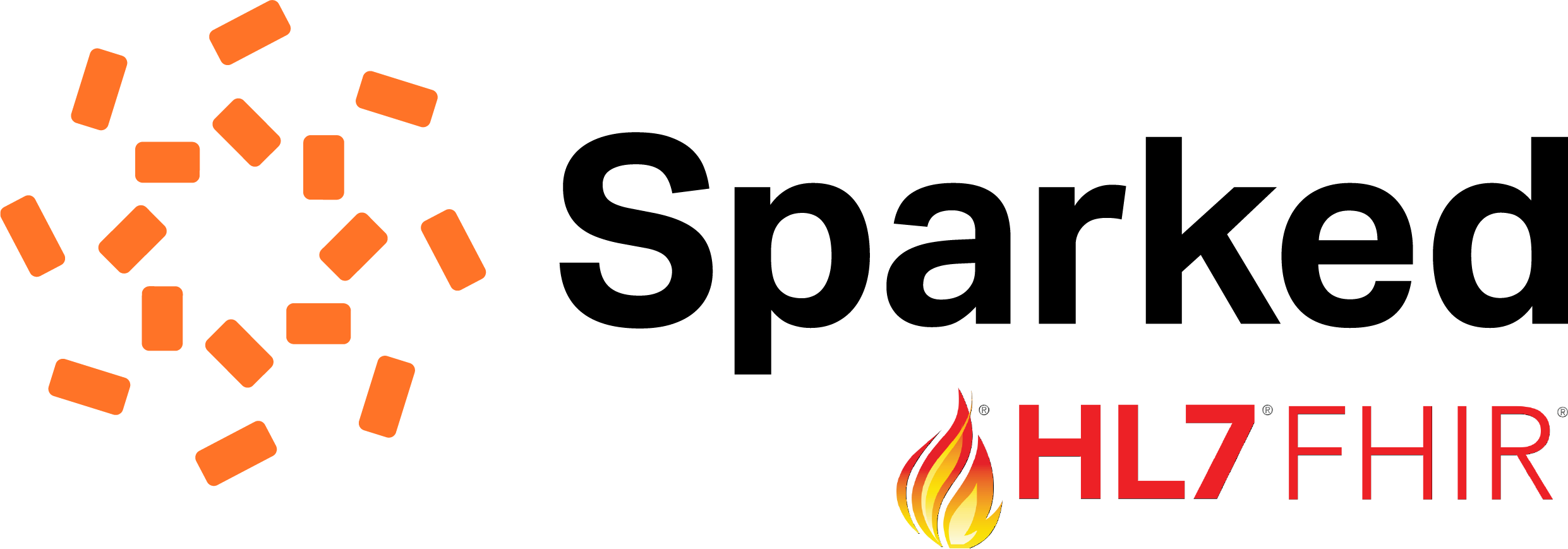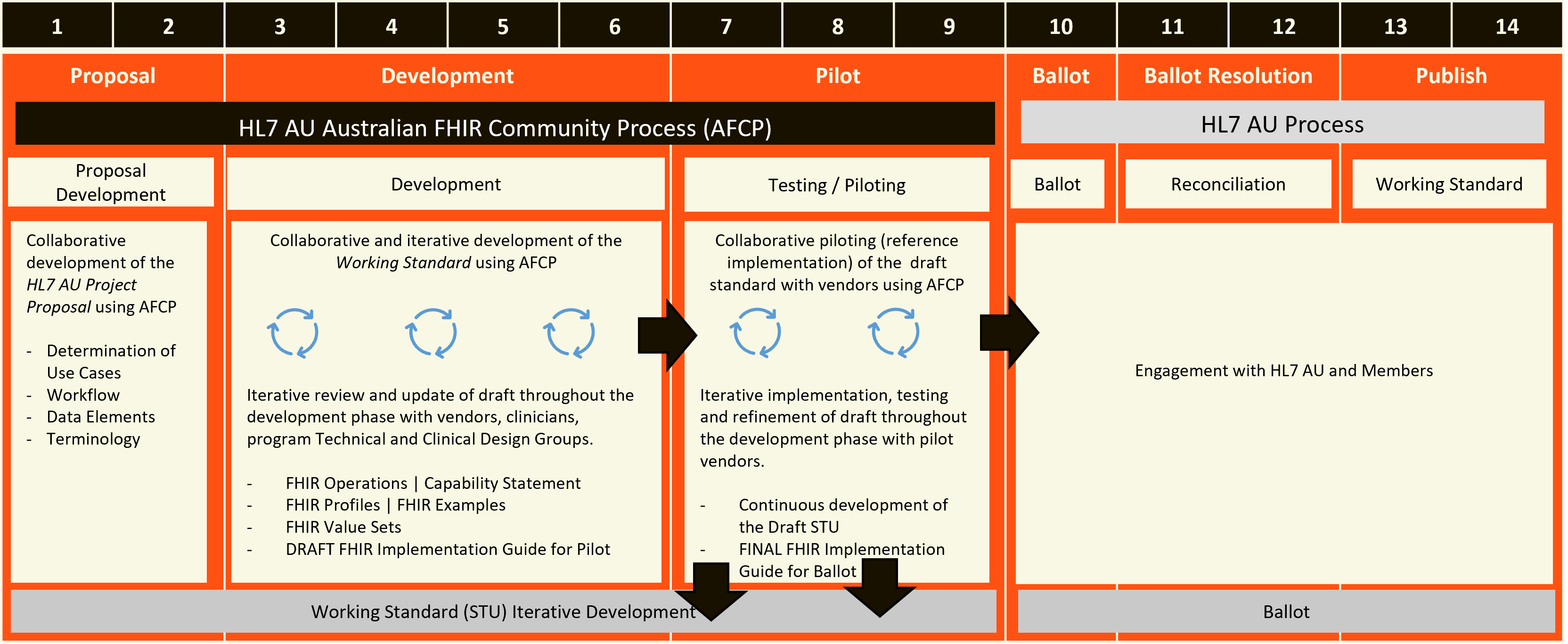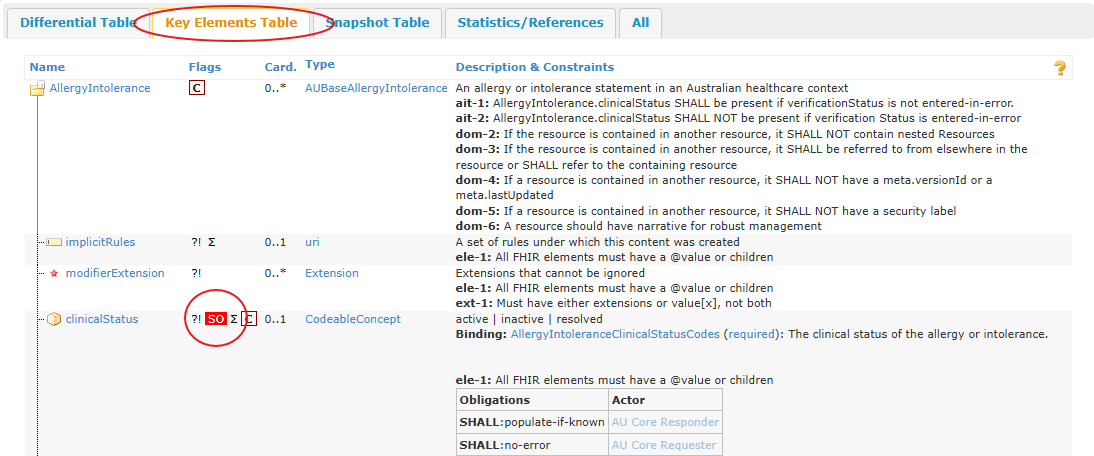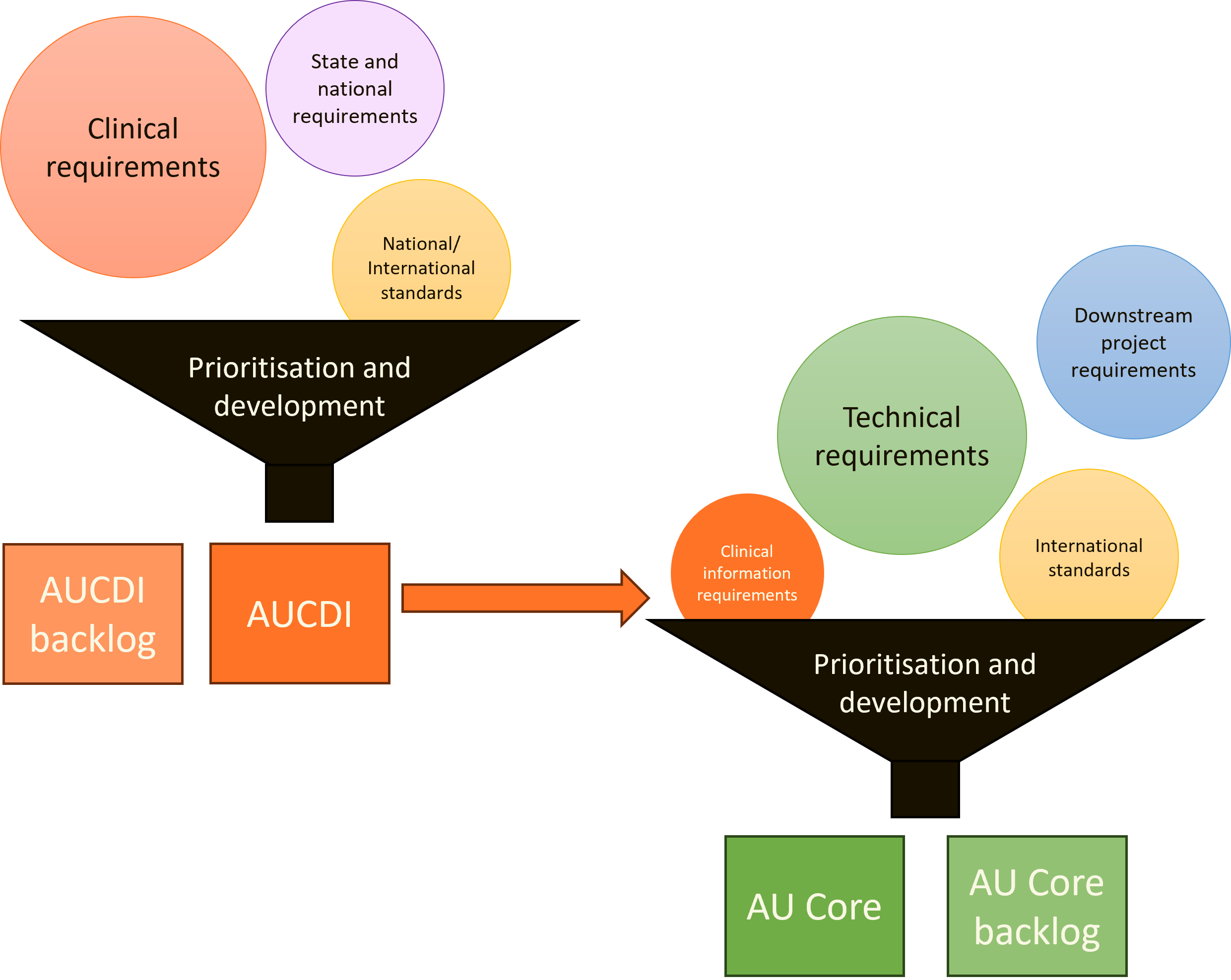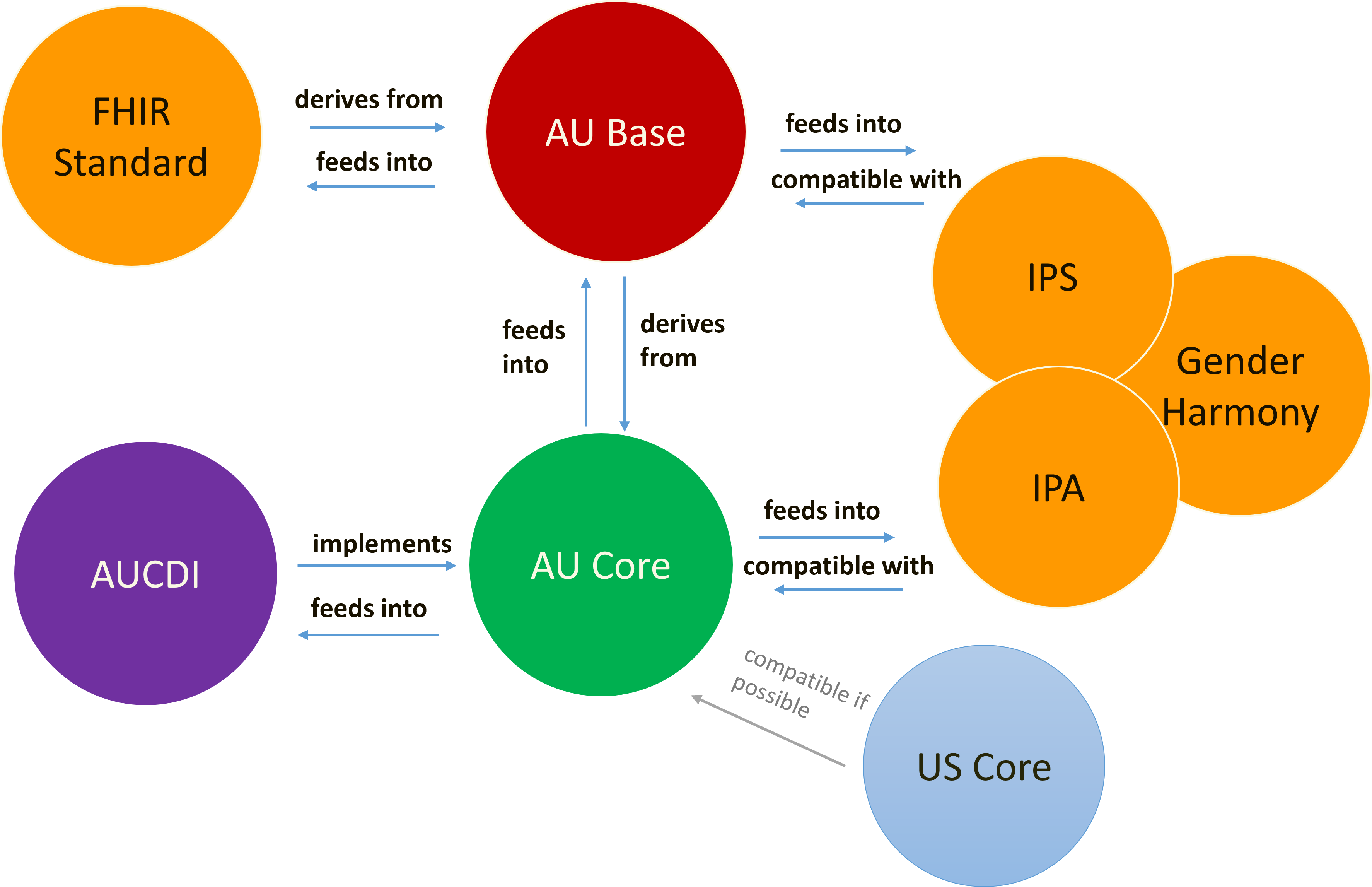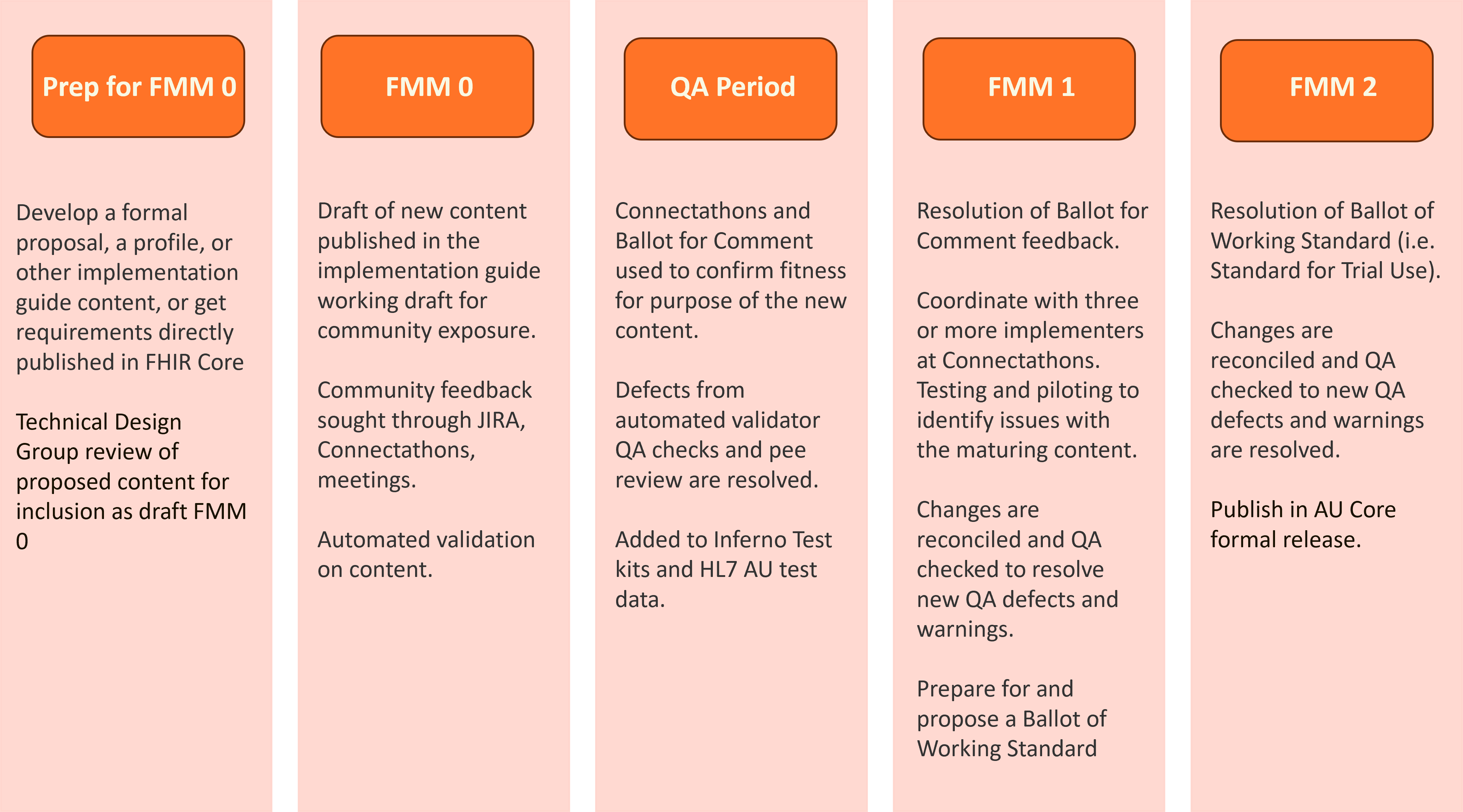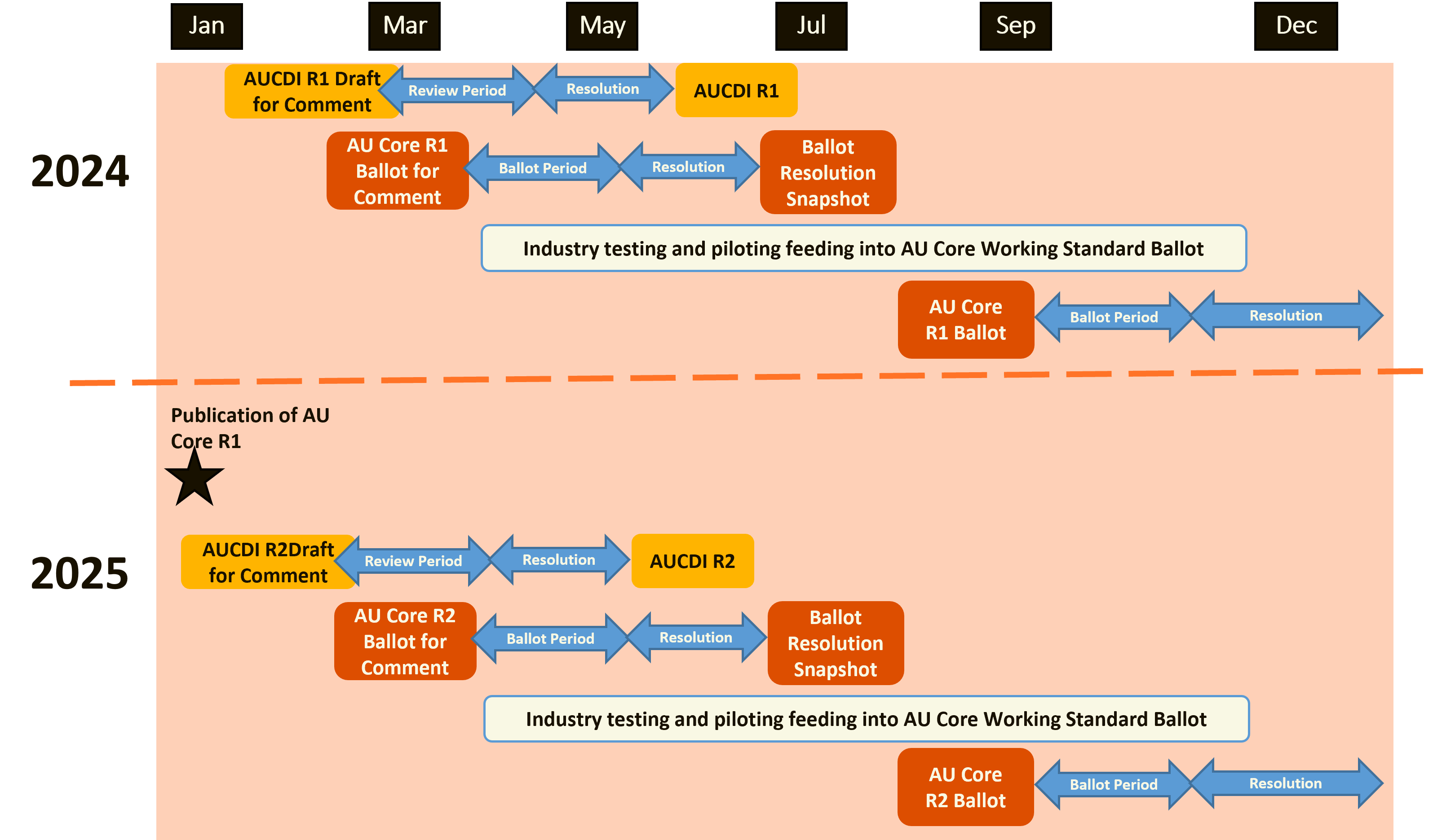Type
Reference
Content
web
healthterminologies.gov.au
Code that identifies the allergy or intolerance
Binding:
https://healthterminologies.gov.au/fhir/ValueSet/indicator-hypersensitivity-intolerance-to-substance-2
(
extensible
)
web
healthterminologies.gov.au
https://healthterminologies.gov.au/fhir/ValueSet/adverse-reaction-substances-and-negated-findings-1
web
healthterminologies.gov.au
Observed body part
Binding:
https://healthterminologies.gov.au/fhir/ValueSet/body-site-1
(
extensible
)
Constraints:
au-core-obs-01
web
healthterminologies.gov.au
https://healthterminologies.gov.au/fhir/ValueSet/metric-body-length-units-1
web
healthterminologies.gov.au
https://healthterminologies.gov.au/fhir/ValueSet/metric-body-temperature-units-1
web
healthterminologies.gov.au
Observed body part
Binding:
https://healthterminologies.gov.au/fhir/ValueSet/body-site-1
(
preferred
)
Constraints:
au-core-obs-02
web
healthterminologies.gov.au
https://healthterminologies.gov.au/fhir/ValueSet/metric-body-weight-units-1
web
healthterminologies.gov.au
Identification of the condition, problem or diagnosis
Binding:
https://healthterminologies.gov.au/fhir/ValueSet/clinical-condition-1
(
extensible
)
web
healthterminologies.gov.au
Anatomical location, if relevant
Binding:
https://healthterminologies.gov.au/fhir/ValueSet/body-site-1
(
extensible
)
Constraints:
au-core-cond-01
web
healthterminologies.gov.au
Specific discipline of pathology Binding:
https://healthterminologies.gov.au/fhir/ValueSet/pathology-diagnostic-service-category-1
(
extensible
)
web
healthterminologies.gov.au
Pathology test or test group
Binding:
https://healthterminologies.gov.au/fhir/ValueSet/spia-pathology-reporting-1
(
extensible
)
web
healthterminologies.gov.au
Individual pathology test
Binding:
https://healthterminologies.gov.au/fhir/ValueSet/spia-pathology-reporting-1
(
extensible
)
web
healthterminologies.gov.au
Observed body part
Binding:
https://healthterminologies.gov.au/fhir/ValueSet/body-site-1
(
extensible
)
Constraints:
au-core-obs-04
web
healthterminologies.gov.au
Specific type of service
Binding:
https://healthterminologies.gov.au/fhir/ValueSet/service-type-1
(
preferred
)
web
healthterminologies.gov.au
Type of service that may be delivered or performed
Binding:
https://healthterminologies.gov.au/fhir/ValueSet/service-type-1
(
extensible
)
web
healthterminologies.gov.au
Observed body part
Binding:
https://healthterminologies.gov.au/fhir/ValueSet/body-site-1
(
preferred
)
Constraints:
au-core-obs-01
web
healthterminologies.gov.au
Code defined by a terminology system
Binding:
https://healthterminologies.gov.au/fhir/ValueSet/amt-vaccine-1
(
required
)
web
healthterminologies.gov.au
Code defined by a terminology system
Binding:
https://healthterminologies.gov.au/fhir/ValueSet/australian-immunisation-register-vaccine-1
(
required
)
web
healthterminologies.gov.au
Code defined by a terminology system
Binding:
https://healthterminologies.gov.au/fhir/ValueSet/australian-medication-1
(
required
)
web
healthterminologies.gov.au
Identification of the procedure
Binding:
https://healthterminologies.gov.au/fhir/ValueSet/procedure-1
(
extensible
)
web
healthterminologies.gov.au
Target body sites
Binding:
https://healthterminologies.gov.au/fhir/ValueSet/body-site-1
(
extensible
)
Constraints:
au-core-pro-01
web
healthterminologies.gov.au
Value of extension
Binding:
https://healthterminologies.gov.au/fhir/ValueSet/biological-sex-1
(
extensible
)
web
healthterminologies.gov.au
Actual result
Binding:
https://healthterminologies.gov.au/fhir/ValueSet/smoking-status-1
(
extensible
)
web
hl7.com.au
web
hl7.com.au
web
sparked.csiro.au
web
github.com
AU Core Implementation Guide, published by HL7 Australia. This guide is not an authorized publication; it is the continuous build for version 2.0.0-ci-build built by the FHIR (HL7® FHIR® Standard) CI Build. This version is based on the current content of https://github.com/hl7au/au-fhir-core/
and changes regularly. See the Directory of published versions
web
healthterminologies.gov.au
Unless not suitable, these codes SHALL be taken from For example codes, see
https://healthterminologies.gov.au/fhir/ValueSet/indicator-hypersensitivity-intolerance-to-substance-2
http://hl7.org/fhir/ValueSet/allergyintolerance-code|4.0.1
extensible
to
https://healthterminologies.gov.au/fhir/ValueSet/indicator-hypersensitivity-intolerance-to-substance-2
)
web
healthterminologies.gov.au
The codes SHOULD be taken from For example codes, see
https://healthterminologies.gov.au/fhir/ValueSet/adverse-reaction-clinical-manifestation-1
http://hl7.org/fhir/ValueSet/clinical-findings|4.0.1
preferred
to
https://healthterminologies.gov.au/fhir/ValueSet/adverse-reaction-clinical-manifestation-1
)
web
healthterminologies.gov.au
Unless not suitable, these codes SHALL be taken from https://healthterminologies.gov.au/fhir/ValueSet/indicator-hypersensitivity-intolerance-to-substance-2
extensible
to
https://healthterminologies.gov.au/fhir/ValueSet/indicator-hypersensitivity-intolerance-to-substance-2
)
web
healthterminologies.gov.au
The codes SHOULD be taken from https://healthterminologies.gov.au/fhir/ValueSet/adverse-reaction-agent-1
preferred
to
https://healthterminologies.gov.au/fhir/ValueSet/adverse-reaction-agent-1
)
web
healthterminologies.gov.au
The codes SHOULD be taken from https://healthterminologies.gov.au/fhir/ValueSet/adverse-reaction-clinical-manifestation-1
preferred
to
https://healthterminologies.gov.au/fhir/ValueSet/adverse-reaction-clinical-manifestation-1
)
web
healthterminologies.gov.au
The codes SHOULD be taken from https://healthterminologies.gov.au/fhir/ValueSet/route-of-administration-1
preferred
to
https://healthterminologies.gov.au/fhir/ValueSet/route-of-administration-1
)
web
healthterminologies.gov.au
Code that identifies the allergy or intolerance Binding:
https://healthterminologies.gov.au/fhir/ValueSet/indicator-hypersensitivity-intolerance-to-substance-2
(
extensible
)
web
healthterminologies.gov.au
Clinical symptoms/signs associated with the Event Binding:
https://healthterminologies.gov.au/fhir/ValueSet/adverse-reaction-clinical-manifestation-1
(
preferred
)
web
healthterminologies.gov.au
https://healthterminologies.gov.au/fhir/ValueSet/indicator-hypersensitivity-intolerance-to-substance-2
web
healthterminologies.gov.au
https://healthterminologies.gov.au/fhir/ValueSet/adverse-reaction-clinical-manifestation-1
web
healthterminologies.gov.au
Code that identifies the allergy or intolerance
Binding:
https://healthterminologies.gov.au/fhir/ValueSet/indicator-hypersensitivity-intolerance-to-substance-2
(
extensible
)
web
healthterminologies.gov.au
Specific substance or pharmaceutical product considered to be responsible for event Binding:
https://healthterminologies.gov.au/fhir/ValueSet/adverse-reaction-agent-1
(
preferred
)
web
healthterminologies.gov.au
How the subject was exposed to the substance Binding:
https://healthterminologies.gov.au/fhir/ValueSet/route-of-administration-1
(
preferred
)
web
healthterminologies.gov.au
https://healthterminologies.gov.au/fhir/ValueSet/adverse-reaction-agent-1
web
healthterminologies.gov.au
https://healthterminologies.gov.au/fhir/ValueSet/route-of-administration-1
web
healthterminologies.gov.au
Unless not suitable, these codes SHALL be taken from For example codes, see
https://healthterminologies.gov.au/fhir/ValueSet/body-site-1
http://hl7.org/fhir/ValueSet/body-site|4.0.1
extensible
to
https://healthterminologies.gov.au/fhir/ValueSet/body-site-1
)
web
healthterminologies.gov.au
Unless not suitable, these codes SHALL be taken from https://healthterminologies.gov.au/fhir/ValueSet/body-site-1
extensible
to
https://healthterminologies.gov.au/fhir/ValueSet/body-site-1
)
web
healthterminologies.gov.au
Observed body part Binding:
https://healthterminologies.gov.au/fhir/ValueSet/body-site-1
(
extensible
)
Constraints:
au-core-obs-01
web
healthterminologies.gov.au
https://healthterminologies.gov.au/fhir/ValueSet/body-site-1
web
healthterminologies.gov.au
The codes SHOULD be taken from For example codes, see
https://healthterminologies.gov.au/fhir/ValueSet/body-site-1
http://hl7.org/fhir/ValueSet/body-site|4.0.1
preferred
to
https://healthterminologies.gov.au/fhir/ValueSet/body-site-1
)
web
healthterminologies.gov.au
The codes SHOULD be taken from https://healthterminologies.gov.au/fhir/ValueSet/body-site-1
preferred
to
https://healthterminologies.gov.au/fhir/ValueSet/body-site-1
)
web
healthterminologies.gov.au
Observed body part Binding:
https://healthterminologies.gov.au/fhir/ValueSet/body-site-1
(
preferred
)
Constraints:
au-core-obs-02
web
healthterminologies.gov.au
Unless not suitable, these codes SHALL be taken from For example codes, see
https://healthterminologies.gov.au/fhir/ValueSet/clinical-condition-1
http://hl7.org/fhir/ValueSet/condition-code|4.0.1
extensible
to
https://healthterminologies.gov.au/fhir/ValueSet/clinical-condition-1
)
web
healthterminologies.gov.au
Unless not suitable, these codes SHALL be taken from https://healthterminologies.gov.au/fhir/ValueSet/clinical-condition-1
extensible
to
https://healthterminologies.gov.au/fhir/ValueSet/clinical-condition-1
)
web
healthterminologies.gov.au
The codes SHOULD be taken from https://healthterminologies.gov.au/fhir/ValueSet/clinical-finding-1
preferred
to
https://healthterminologies.gov.au/fhir/ValueSet/clinical-finding-1
)
web
healthterminologies.gov.au
Identification of the condition, problem or diagnosis Binding:
https://healthterminologies.gov.au/fhir/ValueSet/clinical-condition-1
(
extensible
)
web
healthterminologies.gov.au
Anatomical location, if relevant Binding:
https://healthterminologies.gov.au/fhir/ValueSet/body-site-1
(
extensible
)
Constraints:
au-core-cond-01
web
healthterminologies.gov.au
https://healthterminologies.gov.au/fhir/ValueSet/clinical-condition-1
web
healthterminologies.gov.au
Identification of the condition, problem or diagnosis
Binding:
https://healthterminologies.gov.au/fhir/ValueSet/clinical-condition-1
(
extensible
)
web
healthterminologies.gov.au
Manifestation/symptom Binding:
https://healthterminologies.gov.au/fhir/ValueSet/clinical-finding-1
(
preferred
)
web
healthterminologies.gov.au
https://healthterminologies.gov.au/fhir/ValueSet/clinical-finding-1
web
healthterminologies.gov.au
For example codes, see
https://healthterminologies.gov.au/fhir/ValueSet/evaluation-procedure-1
http://hl7.org/fhir/ValueSet/observation-codes|4.0.1
example
to
https://healthterminologies.gov.au/fhir/ValueSet/evaluation-procedure-1
)
web
healthterminologies.gov.au
For example codes, see https://healthterminologies.gov.au/fhir/ValueSet/evaluation-procedure-1
example
to
https://healthterminologies.gov.au/fhir/ValueSet/evaluation-procedure-1
)
web
healthterminologies.gov.au
Unless not suitable, these codes SHALL be taken from The codes SHOULD be taken from
https://healthterminologies.gov.au/fhir/ValueSet/pathology-diagnostic-service-category-1
http://hl7.org/fhir/ValueSet/observation-category|4.0.1
extensible
to
https://healthterminologies.gov.au/fhir/ValueSet/pathology-diagnostic-service-category-1
)
web
healthterminologies.gov.au
Unless not suitable, these codes SHALL be taken from For example codes, see
https://healthterminologies.gov.au/fhir/ValueSet/spia-pathology-reporting-1
http://hl7.org/fhir/ValueSet/observation-codes|4.0.1
extensible
to
https://healthterminologies.gov.au/fhir/ValueSet/spia-pathology-reporting-1
)
web
healthterminologies.gov.au
Unless not suitable, these codes SHALL be taken from https://healthterminologies.gov.au/fhir/ValueSet/pathology-diagnostic-service-category-1
extensible
to
https://healthterminologies.gov.au/fhir/ValueSet/pathology-diagnostic-service-category-1
)
web
healthterminologies.gov.au
Unless not suitable, these codes SHALL be taken from https://healthterminologies.gov.au/fhir/ValueSet/spia-pathology-reporting-1
extensible
to
https://healthterminologies.gov.au/fhir/ValueSet/spia-pathology-reporting-1
)
web
healthterminologies.gov.au
Specific discipline of pathology Binding:
https://healthterminologies.gov.au/fhir/ValueSet/pathology-diagnostic-service-category-1
(
extensible
)
web
healthterminologies.gov.au
Pathology test or test group Binding:
https://healthterminologies.gov.au/fhir/ValueSet/spia-pathology-reporting-1
(
extensible
)
web
www.rcpa.edu.au
https://www.rcpa.edu.au/fhir/ValueSet/spia-chemical-pathology-refset-3
web
www.rcpa.edu.au
https://www.rcpa.edu.au/fhir/ValueSet/spia-haematology-refset-3
web
www.rcpa.edu.au
https://www.rcpa.edu.au/fhir/ValueSet/spia-immunopathology-refset-3
web
www.rcpa.edu.au
https://www.rcpa.edu.au/fhir/ValueSet/spia-microbiology-serology-molecular-refset-3
web
healthterminologies.gov.au
Individual pathology test Binding:
https://healthterminologies.gov.au/fhir/ValueSet/spia-pathology-reporting-1
(
extensible
)
web
healthterminologies.gov.au
https://healthterminologies.gov.au/fhir/ValueSet/pathology-diagnostic-service-category-1
web
healthterminologies.gov.au
https://healthterminologies.gov.au/fhir/ValueSet/spia-pathology-reporting-1
web
healthterminologies.gov.au
Pathology test or test group
Binding:
https://healthterminologies.gov.au/fhir/ValueSet/spia-pathology-reporting-1
(
extensible
)
web
healthterminologies.gov.au
Individual pathology test
Binding:
https://healthterminologies.gov.au/fhir/ValueSet/spia-pathology-reporting-1
(
extensible
)
web
healthterminologies.gov.au
Diagnostic procedure Binding:
https://healthterminologies.gov.au/fhir/ValueSet/evaluation-procedure-1
(
example
)
web
healthterminologies.gov.au
Observed body part Binding:
https://healthterminologies.gov.au/fhir/ValueSet/body-site-1
(
extensible
)
Constraints:
au-core-obs-04
web
healthterminologies.gov.au
https://healthterminologies.gov.au/fhir/ValueSet/evaluation-procedure-1
web
healthterminologies.gov.au
Observed body part
Binding:
https://healthterminologies.gov.au/fhir/ValueSet/body-site-1
(
extensible
)
Constraints:
au-core-obs-04
web
healthterminologies.gov.au
The codes SHOULD be taken from For example codes, see
https://healthterminologies.gov.au/fhir/ValueSet/service-type-1
http://hl7.org/fhir/ValueSet/service-type|4.0.1
preferred
to
https://healthterminologies.gov.au/fhir/ValueSet/service-type-1
)
web
healthterminologies.gov.au
The codes SHOULD be taken from
https://healthterminologies.gov.au/fhir/ValueSet/reason-for-encounter-1
http://hl7.org/fhir/ValueSet/encounter-reason|4.0.1
preferred
to
https://healthterminologies.gov.au/fhir/ValueSet/reason-for-encounter-1
)
web
healthterminologies.gov.au
The codes SHOULD be taken from https://healthterminologies.gov.au/fhir/ValueSet/service-type-1
preferred
to
https://healthterminologies.gov.au/fhir/ValueSet/service-type-1
)
web
healthterminologies.gov.au
The codes SHOULD be taken from https://healthterminologies.gov.au/fhir/ValueSet/encounter-type-1
preferred
to
https://healthterminologies.gov.au/fhir/ValueSet/encounter-type-1
)
web
healthterminologies.gov.au
The codes SHOULD be taken from https://healthterminologies.gov.au/fhir/ValueSet/reason-for-encounter-1
preferred
to
https://healthterminologies.gov.au/fhir/ValueSet/reason-for-encounter-1
)
web
healthterminologies.gov.au
Unless not suitable, these codes SHALL be taken from https://healthterminologies.gov.au/fhir/ValueSet/separation-mode-1
extensible
to
https://healthterminologies.gov.au/fhir/ValueSet/separation-mode-1
)
web
healthterminologies.gov.au
Specific type of service Binding:
https://healthterminologies.gov.au/fhir/ValueSet/service-type-1
(
preferred
)
web
healthterminologies.gov.au
Coded reason the encounter takes place Binding:
https://healthterminologies.gov.au/fhir/ValueSet/reason-for-encounter-1
(
preferred
)
web
healthterminologies.gov.au
https://healthterminologies.gov.au/fhir/ValueSet/service-type-1
web
healthterminologies.gov.au
https://healthterminologies.gov.au/fhir/ValueSet/reason-for-encounter-1
web
healthterminologies.gov.au
Specific type of service
Binding:
https://healthterminologies.gov.au/fhir/ValueSet/service-type-1
(
preferred
)
web
healthterminologies.gov.au
Specific type of encounter Binding:
https://healthterminologies.gov.au/fhir/ValueSet/encounter-type-1
(
preferred
)
web
healthterminologies.gov.au
Separation Mode Binding:
https://healthterminologies.gov.au/fhir/ValueSet/separation-mode-1
(
extensible
)
web
healthterminologies.gov.au
https://healthterminologies.gov.au/fhir/ValueSet/encounter-type-1
web
healthterminologies.gov.au
https://healthterminologies.gov.au/fhir/ValueSet/separation-mode-1
web
healthterminologies.gov.au
Unless not suitable, these codes SHALL be taken from For example codes, see
https://healthterminologies.gov.au/fhir/ValueSet/service-type-1
http://hl7.org/fhir/ValueSet/service-type|4.0.1
extensible
to
https://healthterminologies.gov.au/fhir/ValueSet/service-type-1
)
web
healthterminologies.gov.au
Unless not suitable, these codes SHALL be taken from https://healthterminologies.gov.au/fhir/ValueSet/service-type-1
extensible
to
https://healthterminologies.gov.au/fhir/ValueSet/service-type-1
)
web
healthterminologies.gov.au
The codes SHOULD be taken from https://healthterminologies.gov.au/fhir/ValueSet/clinical-specialty-1
preferred
to
https://healthterminologies.gov.au/fhir/ValueSet/clinical-specialty-1
)
web
healthterminologies.gov.au
Unless not suitable, these codes SHALL be taken from https://healthterminologies.gov.au/fhir/ValueSet/common-languages-australia-2
extensible
to
https://healthterminologies.gov.au/fhir/ValueSet/common-languages-australia-2
)
web
healthterminologies.gov.au
Type of service that may be delivered or performed Binding:
https://healthterminologies.gov.au/fhir/ValueSet/service-type-1
(
extensible
)
web
healthterminologies.gov.au
Type of service that may be delivered or performed
Binding:
https://healthterminologies.gov.au/fhir/ValueSet/service-type-1
(
extensible
)
web
healthterminologies.gov.au
Specialties handled by the HealthcareService Binding:
https://healthterminologies.gov.au/fhir/ValueSet/clinical-specialty-1
(
preferred
)
web
healthterminologies.gov.au
The language that this service is offered in Binding:
https://healthterminologies.gov.au/fhir/ValueSet/common-languages-australia-2
(
extensible
)
web
healthterminologies.gov.au
https://healthterminologies.gov.au/fhir/ValueSet/clinical-specialty-1
web
healthterminologies.gov.au
https://healthterminologies.gov.au/fhir/ValueSet/common-languages-australia-2
web
healthterminologies.gov.au
Observed body part Binding:
https://healthterminologies.gov.au/fhir/ValueSet/body-site-1
(
preferred
)
Constraints:
au-core-obs-01
web
healthterminologies.gov.au
The codes SHALL be taken from For codes, see
https://healthterminologies.gov.au/fhir/ValueSet/amt-vaccine-1
required
to
https://healthterminologies.gov.au/fhir/ValueSet/amt-vaccine-1
)
web
healthterminologies.gov.au
The codes SHALL be taken from For codes, see
https://healthterminologies.gov.au/fhir/ValueSet/australian-immunisation-register-vaccine-1
required
to
https://healthterminologies.gov.au/fhir/ValueSet/australian-immunisation-register-vaccine-1
)
web
healthterminologies.gov.au
The codes SHALL be taken from https://healthterminologies.gov.au/fhir/ValueSet/amt-vaccine-1
required
to
https://healthterminologies.gov.au/fhir/ValueSet/amt-vaccine-1
)
web
healthterminologies.gov.au
The codes SHALL be taken from https://healthterminologies.gov.au/fhir/ValueSet/australian-immunisation-register-vaccine-1
required
to
https://healthterminologies.gov.au/fhir/ValueSet/australian-immunisation-register-vaccine-1
)
web
healthterminologies.gov.au
The codes SHOULD be taken from https://healthterminologies.gov.au/fhir/ValueSet/reason-vaccine-not-administered-3
preferred
to
https://healthterminologies.gov.au/fhir/ValueSet/reason-vaccine-not-administered-3
)
web
healthterminologies.gov.au
The codes SHOULD be taken from https://healthterminologies.gov.au/fhir/ValueSet/immunisation-anatomical-site-1
preferred
to
https://healthterminologies.gov.au/fhir/ValueSet/immunisation-anatomical-site-1
)
web
healthterminologies.gov.au
The codes SHOULD be taken from https://healthterminologies.gov.au/fhir/ValueSet/immunisation-route-of-administration-1
preferred
to
https://healthterminologies.gov.au/fhir/ValueSet/immunisation-route-of-administration-1
)
web
healthterminologies.gov.au
The codes SHOULD be taken from https://healthterminologies.gov.au/fhir/ValueSet/reason-vaccine-administered-1
preferred
to
https://healthterminologies.gov.au/fhir/ValueSet/reason-vaccine-administered-1
)
web
healthterminologies.gov.au
The codes SHOULD be taken from https://healthterminologies.gov.au/fhir/ValueSet/vaccination-target-disease-1
preferred
to
https://healthterminologies.gov.au/fhir/ValueSet/vaccination-target-disease-1
)
web
healthterminologies.gov.au
When populating Immunization.vaccineCode
responders SHALL
correctly populate Immunization.vaccineCode.coding
with either a code from Australian Medicines Terminology Vaccine
or Australian Immunisation Register Vaccine
, or both, if a coded value is known and MAY
populate with a code from another code system.
Responders MAY
populate with only text if no coded value is known.
web
healthterminologies.gov.au
When populating Immunization.vaccineCode
responders SHALL
correctly populate Immunization.vaccineCode.coding
with either a code from Australian Medicines Terminology Vaccine
or Australian Immunisation Register Vaccine
, or both, if a coded value is known and MAY
populate with a code from another code system.
Responders MAY
populate with only text if no coded value is known.
web
healthterminologies.gov.au
https://healthterminologies.gov.au/fhir/ValueSet/amt-vaccine-1
web
healthterminologies.gov.au
https://healthterminologies.gov.au/fhir/ValueSet/australian-immunisation-register-vaccine-1
web
healthterminologies.gov.au
Code defined by a terminology system Binding:
https://healthterminologies.gov.au/fhir/ValueSet/amt-vaccine-1
(
required
)
web
healthterminologies.gov.au
Code defined by a terminology system Binding:
https://healthterminologies.gov.au/fhir/ValueSet/australian-immunisation-register-vaccine-1
(
required
)
web
healthterminologies.gov.au
https://healthterminologies.gov.au/fhir/ValueSet/amt-vaccine-1
web
healthterminologies.gov.au
https://healthterminologies.gov.au/fhir/ValueSet/australian-immunisation-register-vaccine-1
web
healthterminologies.gov.au
Code defined by a terminology system
Binding:
https://healthterminologies.gov.au/fhir/ValueSet/amt-vaccine-1
(
required
)
web
healthterminologies.gov.au
Code defined by a terminology system
Binding:
https://healthterminologies.gov.au/fhir/ValueSet/australian-immunisation-register-vaccine-1
(
required
)
web
healthterminologies.gov.au
Reason not done Binding:
https://healthterminologies.gov.au/fhir/ValueSet/reason-vaccine-not-administered-3
(
preferred
)
web
healthterminologies.gov.au
Body site vaccine was administered Binding:
https://healthterminologies.gov.au/fhir/ValueSet/immunisation-anatomical-site-1
(
preferred
)
web
healthterminologies.gov.au
How vaccine entered body Binding:
https://healthterminologies.gov.au/fhir/ValueSet/immunisation-route-of-administration-1
(
preferred
)
web
healthterminologies.gov.au
Why immunization occurred Binding:
https://healthterminologies.gov.au/fhir/ValueSet/reason-vaccine-administered-1
(
preferred
)
web
healthterminologies.gov.au
Vaccine preventatable disease being targetted Binding:
https://healthterminologies.gov.au/fhir/ValueSet/vaccination-target-disease-1
(
preferred
)
web
healthterminologies.gov.au
https://healthterminologies.gov.au/fhir/ValueSet/reason-vaccine-not-administered-3
web
healthterminologies.gov.au
https://healthterminologies.gov.au/fhir/ValueSet/immunisation-anatomical-site-1
web
healthterminologies.gov.au
https://healthterminologies.gov.au/fhir/ValueSet/immunisation-route-of-administration-1
web
healthterminologies.gov.au
https://healthterminologies.gov.au/fhir/ValueSet/reason-vaccine-administered-1
web
healthterminologies.gov.au
https://healthterminologies.gov.au/fhir/ValueSet/vaccination-target-disease-1
web
healthterminologies.gov.au
The codes SHALL be taken from For codes, see
https://healthterminologies.gov.au/fhir/ValueSet/australian-medication-1
required
to
https://healthterminologies.gov.au/fhir/ValueSet/australian-medication-1
)
web
healthterminologies.gov.au
The codes SHALL be taken from https://healthterminologies.gov.au/fhir/ValueSet/australian-medication-1
required
to
https://healthterminologies.gov.au/fhir/ValueSet/australian-medication-1
)
web
healthterminologies.gov.au
The codes SHOULD be taken from https://healthterminologies.gov.au/fhir/ValueSet/medication-form-1
preferred
to
https://healthterminologies.gov.au/fhir/ValueSet/medication-form-1
)
web
healthterminologies.gov.au
The codes SHOULD be taken from https://healthterminologies.gov.au/fhir/ValueSet/medication-ingredient-1
preferred
to
https://healthterminologies.gov.au/fhir/ValueSet/medication-ingredient-1
)
web
healthterminologies.gov.au
https://healthterminologies.gov.au/fhir/ValueSet/australian-medication-1
web
healthterminologies.gov.au
Code defined by a terminology system Binding:
https://healthterminologies.gov.au/fhir/ValueSet/australian-medication-1
(
required
)
web
healthterminologies.gov.au
https://healthterminologies.gov.au/fhir/ValueSet/australian-medication-1
web
healthterminologies.gov.au
Code defined by a terminology system
Binding:
https://healthterminologies.gov.au/fhir/ValueSet/australian-medication-1
(
required
)
web
healthterminologies.gov.au
powder | tablets | capsule + Binding:
https://healthterminologies.gov.au/fhir/ValueSet/medication-form-1
(
preferred
)
web
healthterminologies.gov.au
The actual ingredient or content Binding:
https://healthterminologies.gov.au/fhir/ValueSet/medication-ingredient-1
(
preferred
)
web
healthterminologies.gov.au
https://healthterminologies.gov.au/fhir/ValueSet/medication-form-1
web
healthterminologies.gov.au
https://healthterminologies.gov.au/fhir/ValueSet/medication-ingredient-1
web
healthterminologies.gov.au
The codes SHOULD be taken from For example codes, see
https://healthterminologies.gov.au/fhir/ValueSet/reason-for-request-1
http://hl7.org/fhir/ValueSet/condition-code|4.0.1
preferred
to
https://healthterminologies.gov.au/fhir/ValueSet/reason-for-request-1
)
web
healthterminologies.gov.au
The codes SHOULD be taken from https://healthterminologies.gov.au/fhir/ValueSet/reason-for-request-1
preferred
to
https://healthterminologies.gov.au/fhir/ValueSet/reason-for-request-1
)
web
healthterminologies.gov.au
The codes SHOULD be taken from https://healthterminologies.gov.au/fhir/ValueSet/medicine-substitution-reason-1
preferred
to
https://healthterminologies.gov.au/fhir/ValueSet/medicine-substitution-reason-1
)
web
healthterminologies.gov.au
When populating MedicationRequest.medicationCodeableConcept
responders SHALL
correctly populate MedicationRequest.medicationCodeableConcept.coding
with either a code from Australian Medication
or PBS Item Codes
, or both, if a coded value is known and MAY
populate with a code from another code system.
Responders MAY
populate with only text if no coded value is known.
web
healthterminologies.gov.au
Grounds for concurrent supply of medication URL:
http://hl7.org.au/fhir/StructureDefinition/subsidised-concurrent-supply
Binding:
https://healthterminologies.gov.au/fhir/ValueSet/concurrent-supply-grounds-1
(
required
)
web
healthterminologies.gov.au
Reason or indication for ordering or not ordering the medication Binding:
https://healthterminologies.gov.au/fhir/ValueSet/reason-for-request-1
(
preferred
)
web
healthterminologies.gov.au
https://healthterminologies.gov.au/fhir/ValueSet/reason-for-request-1
web
healthterminologies.gov.au
Take "as needed" (for x) Binding:
https://healthterminologies.gov.au/fhir/ValueSet/clinical-finding-1
(
preferred
)
web
healthterminologies.gov.au
Body site to administer to Binding:
https://healthterminologies.gov.au/fhir/ValueSet/body-site-1
(
preferred
)
web
healthterminologies.gov.au
How drug should enter body Binding:
https://healthterminologies.gov.au/fhir/ValueSet/route-of-administration-1
(
preferred
)
web
healthterminologies.gov.au
Why should (not) substitution be made Binding:
https://healthterminologies.gov.au/fhir/ValueSet/medicine-substitution-reason-1
(
preferred
)
web
healthterminologies.gov.au
https://healthterminologies.gov.au/fhir/ValueSet/medicine-substitution-reason-1
web
healthterminologies.gov.au
The codes SHOULD be taken from For example codes, see
https://healthterminologies.gov.au/fhir/ValueSet/medication-reason-taken-1
http://hl7.org/fhir/ValueSet/condition-code|4.0.1
preferred
to
https://healthterminologies.gov.au/fhir/ValueSet/medication-reason-taken-1
)
web
healthterminologies.gov.au
The codes SHOULD be taken from https://healthterminologies.gov.au/fhir/ValueSet/medication-reason-taken-1
preferred
to
https://healthterminologies.gov.au/fhir/ValueSet/medication-reason-taken-1
)
web
healthterminologies.gov.au
When populating MedicationStatement.medicationCodeableConcept
responders SHALL
correctly populate MedicationStatement.medicationCodeableConcept.coding
with either a code from Australian Medication
or PBS Item Codes
, or both, if a coded value is known and MAY
populate with a code from another code system.
Responders MAY
populate with only text if no coded value is known.
web
healthterminologies.gov.au
Reason for why the medication is being/was taken Binding:
https://healthterminologies.gov.au/fhir/ValueSet/medication-reason-taken-1
(
preferred
)
web
healthterminologies.gov.au
https://healthterminologies.gov.au/fhir/ValueSet/medication-reason-taken-1
web
healthterminologies.gov.au
When selecting a code for Organization type, if a system is unable to provide a code from the preferred value set Healthcare Organisation Role Type
because the implementation context is not restricted to healthcare practitioner providers then it is recommended to select from the wider set available in SNOMED CT. If a suitable code from SNOMED CT is not available, a code from the code system Australian and New Zealand Standard Industrial Classification (ANZSIC), 2006 (Revision 2.0)
may be used.
web
www.healthterminologies.gov.au
When selecting a code for Organization type, if a system is unable to provide a code from the preferred value set Healthcare Organisation Role Type
because the implementation context is not restricted to healthcare practitioner providers then it is recommended to select from the wider set available in SNOMED CT. If a suitable code from SNOMED CT is not available, a code from the code system Australian and New Zealand Standard Industrial Classification (ANZSIC), 2006 (Revision 2.0)
may be used.
web
healthterminologies.gov.au
The codes SHOULD be taken from For example codes, see
https://healthterminologies.gov.au/fhir/ValueSet/healthcare-organisation-role-type-1
http://hl7.org/fhir/ValueSet/organization-type|4.0.1
preferred
to
https://healthterminologies.gov.au/fhir/ValueSet/healthcare-organisation-role-type-1
)
web
healthterminologies.gov.au
The codes SHOULD be taken from https://healthterminologies.gov.au/fhir/ValueSet/healthcare-organisation-role-type-1
preferred
to
https://healthterminologies.gov.au/fhir/ValueSet/healthcare-organisation-role-type-1
)
web
healthterminologies.gov.au
Kind of organization Binding:
https://healthterminologies.gov.au/fhir/ValueSet/healthcare-organisation-role-type-1
(
preferred
)
web
healthterminologies.gov.au
https://healthterminologies.gov.au/fhir/ValueSet/healthcare-organisation-role-type-1
web
meteor.aihw.gov.au
This concept is equivalent to Australian Institute of Health and Welfare data element 602543 Person—Indigenous status, code N
.
web
meteor.aihw.gov.au
This concept is equivalent to Australian Institute of Health and Welfare data element 737931 Person—ADF veteran status, code N
.
web
meteor.aihw.gov.au
This concept is equivalent to Australian Institute of Health and Welfare data element 603671 Patient—Closing the Gap co-payment eligibility indicator
.
web
www.abs.gov.au
See Australian Bureau of Statics (ABS) 1200.0.55.007 - Year of Arrival Standard, 2014, Version 1.5
for further information. This concept is equivalent to Australian Institute of Health and Welfare data element 269447 Person—year of first arrival in Australia
.
web
meteor.aihw.gov.au
See Australian Bureau of Statics (ABS) 1200.0.55.007 - Year of Arrival Standard, 2014, Version 1.5
for further information. This concept is equivalent to Australian Institute of Health and Welfare data element 269447 Person—year of first arrival in Australia
.
web
healthterminologies.gov.au
Unless not suitable, these codes SHALL be taken from The codes SHOULD be taken from
https://healthterminologies.gov.au/fhir/ValueSet/common-languages-australia-2
http://hl7.org/fhir/ValueSet/languages|4.0.1
extensible
to
https://healthterminologies.gov.au/fhir/ValueSet/common-languages-australia-2
)
web
healthterminologies.gov.au
Unless not suitable, these codes SHALL be taken from https://healthterminologies.gov.au/fhir/ValueSet/contact-relationship-type-3
extensible
to
https://healthterminologies.gov.au/fhir/ValueSet/contact-relationship-type-3
)
web
healthterminologies.gov.au
Indigenous status URL:
http://hl7.org.au/fhir/StructureDefinition/indigenous-status
Binding:
https://healthterminologies.gov.au/fhir/ValueSet/australian-indigenous-status-1
(
required
)
web
healthterminologies.gov.au
Veteran / Australian Defence Force (ADF) status URL:
http://hl7.org.au/fhir/StructureDefinition/veteran-status
Binding:
https://healthterminologies.gov.au/fhir/ValueSet/australian-veteran-status-1
(
required
)
web
healthterminologies.gov.au
Birth date accuracy indicator URL:
http://hl7.org.au/fhir/StructureDefinition/date-accuracy-indicator
Binding:
https://healthterminologies.gov.au/fhir/ValueSet/date-accuracy-indicator-1
(
required
)
:
Date accuracy coding
web
healthterminologies.gov.au
Deceased date accuracy indicator URL:
http://hl7.org.au/fhir/StructureDefinition/date-accuracy-indicator
Binding:
https://healthterminologies.gov.au/fhir/ValueSet/date-accuracy-indicator-1
(
required
)
:
Date accuracy coding
web
healthterminologies.gov.au
The language which can be used to communicate with the patient about his or her health Binding:
https://healthterminologies.gov.au/fhir/ValueSet/common-languages-australia-2
(
extensible
)
web
healthterminologies.gov.au
The kind of relationship Binding:
https://healthterminologies.gov.au/fhir/ValueSet/contact-relationship-type-3
(
extensible
)
web
healthterminologies.gov.au
https://healthterminologies.gov.au/fhir/ValueSet/contact-relationship-type-3
web
healthterminologies.gov.au
The individual's gender identity is populated in the extension:value.value[x]
of the Individual Gender Identity
extension and shall contain one of the codes from the Gender Identity Response
value set if any of the codes within the value set can apply.
web
www.abs.gov.au
See Australian Bureau of Statics (ABS) Standard for Sex, Gender, Variations of Sex Characteristics and Sexual Orientation Variables, 2020
for further materials.
web
healthterminologies.gov.au
The individual's pronouns are populated in the extension:value.value[x]
of the Individual Pronouns
extension and shall contain one of the codes from the Australian Pronouns
value set if any of the codes within the value set can apply.
web
healthterminologies.gov.au
A language the practitioner can use in patient communication Binding:
https://healthterminologies.gov.au/fhir/ValueSet/common-languages-australia-2
(
extensible
)
web
healthterminologies.gov.au
The codes SHOULD be taken from For example codes, see
https://healthterminologies.gov.au/fhir/ValueSet/practitioner-role-1
http://hl7.org/fhir/ValueSet/practitioner-role|4.0.1
preferred
to
https://healthterminologies.gov.au/fhir/ValueSet/practitioner-role-1
)
web
healthterminologies.gov.au
The codes SHOULD be taken from
https://healthterminologies.gov.au/fhir/ValueSet/clinical-specialty-1
http://hl7.org/fhir/ValueSet/c80-practice-codes|4.0.1
preferred
to
https://healthterminologies.gov.au/fhir/ValueSet/clinical-specialty-1
)
web
healthterminologies.gov.au
The codes SHOULD be taken from https://healthterminologies.gov.au/fhir/ValueSet/practitioner-role-1
preferred
to
https://healthterminologies.gov.au/fhir/ValueSet/practitioner-role-1
)
web
healthterminologies.gov.au
Roles which this practitioner may perform Binding:
https://healthterminologies.gov.au/fhir/ValueSet/practitioner-role-1
(
preferred
)
web
healthterminologies.gov.au
Specific specialty of the practitioner Binding:
https://healthterminologies.gov.au/fhir/ValueSet/clinical-specialty-1
(
preferred
)
web
healthterminologies.gov.au
https://healthterminologies.gov.au/fhir/ValueSet/practitioner-role-1
web
healthterminologies.gov.au
Unless not suitable, these codes SHALL be taken from For example codes, see
https://healthterminologies.gov.au/fhir/ValueSet/procedure-1
http://hl7.org/fhir/ValueSet/procedure-code|4.0.1
extensible
to
https://healthterminologies.gov.au/fhir/ValueSet/procedure-1
)
web
healthterminologies.gov.au
Unless not suitable, these codes SHALL be taken from https://healthterminologies.gov.au/fhir/ValueSet/procedure-1
extensible
to
https://healthterminologies.gov.au/fhir/ValueSet/procedure-1
)
web
healthterminologies.gov.au
Identification of the procedure Binding:
https://healthterminologies.gov.au/fhir/ValueSet/procedure-1
(
extensible
)
web
healthterminologies.gov.au
Target body sites Binding:
https://healthterminologies.gov.au/fhir/ValueSet/body-site-1
(
extensible
)
Constraints:
au-core-pro-01
web
healthterminologies.gov.au
https://healthterminologies.gov.au/fhir/ValueSet/procedure-1
web
healthterminologies.gov.au
Identification of the procedure
Binding:
https://healthterminologies.gov.au/fhir/ValueSet/procedure-1
(
extensible
)
web
healthterminologies.gov.au
Unless not suitable, these codes SHALL be taken from The codes SHOULD be taken from
https://healthterminologies.gov.au/fhir/ValueSet/related-person-relationship-type-1
http://hl7.org/fhir/ValueSet/relatedperson-relationshiptype|4.0.1
extensible
to
https://healthterminologies.gov.au/fhir/ValueSet/related-person-relationship-type-1
)
web
healthterminologies.gov.au
Unless not suitable, these codes SHALL be taken from https://healthterminologies.gov.au/fhir/ValueSet/related-person-relationship-type-1
extensible
to
https://healthterminologies.gov.au/fhir/ValueSet/related-person-relationship-type-1
)
web
healthterminologies.gov.au
The nature of the relationship Binding:
https://healthterminologies.gov.au/fhir/ValueSet/related-person-relationship-type-1
(
extensible
)
web
healthterminologies.gov.au
https://healthterminologies.gov.au/fhir/ValueSet/related-person-relationship-type-1
web
healthterminologies.gov.au
The language which can be used to communicate with the patient about his or her health Binding:
https://healthterminologies.gov.au/fhir/ValueSet/common-languages-australia-2
(
extensible
)
web
healthterminologies.gov.au
Unless not suitable, these codes SHALL be taken from For codes, see
https://healthterminologies.gov.au/fhir/ValueSet/biological-sex-1
extensible
to
https://healthterminologies.gov.au/fhir/ValueSet/biological-sex-1
)
web
healthterminologies.gov.au
Unless not suitable, these codes SHALL be taken from https://healthterminologies.gov.au/fhir/ValueSet/biological-sex-1
extensible
to
https://healthterminologies.gov.au/fhir/ValueSet/biological-sex-1
)
web
healthterminologies.gov.au
Value of extension Binding:
https://healthterminologies.gov.au/fhir/ValueSet/biological-sex-1
(
extensible
)
web
healthterminologies.gov.au
https://healthterminologies.gov.au/fhir/ValueSet/biological-sex-1
web
healthterminologies.gov.au
Unless not suitable, these codes SHALL be taken from For codes, see
https://healthterminologies.gov.au/fhir/ValueSet/smoking-status-1
extensible
to
https://healthterminologies.gov.au/fhir/ValueSet/smoking-status-1
)
web
healthterminologies.gov.au
Unless not suitable, these codes SHALL be taken from https://healthterminologies.gov.au/fhir/ValueSet/smoking-status-1
extensible
to
https://healthterminologies.gov.au/fhir/ValueSet/smoking-status-1
)
web
healthterminologies.gov.au
Actual result Binding:
https://healthterminologies.gov.au/fhir/ValueSet/smoking-status-1
(
extensible
)
web
healthterminologies.gov.au
https://healthterminologies.gov.au/fhir/ValueSet/smoking-status-1
web
healthterminologies.gov.au
Actual result
Binding:
https://healthterminologies.gov.au/fhir/ValueSet/smoking-status-1
(
extensible
)
web
sparked.csiro.au
Australian Clinical Data for Interoperability (AUCDI)
and AU Core complement each other assisting in common understanding of clinical data concepts when implemented in systems and exchanged between systems.
web
github.com
updated mapping of AUCDI Procedure Completed Event to be represented by Procedure only au-fhir-core #147
.
web
github.com
updated mapping of AUCDI Medication Use Statement to be represented by MedicationStatement only au-fhir-core #145
.
web
www.openapis.org
The following OpenAPI
files are generated from the AU Core CapabilityStatements:
web
github.com
In addition to the examples defined in this implementation, synthetic (realistic but not real) test data for developers and testers that conforms to HL7 Australia FHIR implementation guides is maintained in the HL7 AU FHIR Test Data
repository.
web
fhir-open-api-dstu2.smarthealthit.org
base: The Service Root URL (e.g., " https://fhir-open-api-dstu2.smarthealthit.org
”)
web
healthterminologies.gov.au
Australian Medicines Terminology Vaccine
, Australian Immunisation Register Vaccine
web
healthterminologies.gov.au
Australian Medicines Terminology Vaccine
, Australian Immunisation Register Vaccine
web
healthterminologies.gov.au
Australian Medication
, PBS Item Codes
web
healthterminologies.gov.au
For example, the profile AU Core Medication
requires support for the following terminology choices Medication.code.coding
defined in AU Base Medication
to support Australian Medication
and PBS Item Codes
as indicated by flagging Must Support
on those two terminology slices.
web
healthterminologies.gov.au
AU Core Responders SHALL
correctly populate Medication.code.coding
with either a code from Australian Medication
or PBS Item Codes
, or both, if a coded value is known.
web
healthterminologies.gov.au
AU Core Requesters SHALL
accept a Medication resource without error if Medication.code.coding
is present and containing any valid value. A valid value may be text, or may be a code from Australian Medication
or PBS Item Codes
, or both, or some other code.
web
sparked.csiro.au
This implementation guide is under development through the AU Core project as part of the Sparked AU FHIR Accelerator
. The Sparked AU FHIR Accelerator is a community comprising government, technology vendors, provider organisations, peak bodies, practitioners, and domain experts, to accelerate the creation and use of national FHIR standards in health care information exchange.
web
sparked.csiro.au
AUCDI
aims to define requirements underlying the standardisation of the capture, structure, usage, and exchange of health data to counteract the current fragmentation of Australia’s health data systems. The AUCDI forms a basis for clinical data requirements for AU Core.
web
creativecommons.org
HL7 Australia use of this specification is licensed under Creative Commons "No Rights Reserved" ( CC0
).
web
dicom.nema.org
National Electrical Manufacturers Association ( NEMA
). This specification may reference content from DICOM, which is copyright NEMA, and distributed by agreement between NEMA/DICOM and HL7. Implementer use of DICOM is not covered by this agreement
web
www.healthterminologies.gov.au
National Clinical Terminology Services ( NCTS
)
web
www.healthterminologies.gov.au
This material contains references to National Clinical Terminology Service artefacts these are Copyright © 2024 Australian Digital Health Agency, implementer user of this content are advised of the NCTS Terms of Use
.
web
www.healthterminologies.gov.au
Australian Medicines Terminology (AMT) is the national terminology for identification and naming of medicines in clinical systems for Australia.
The AMT is published monthly to include new items on the Australian Register of Therapeutic Goods from the TGA, as well as items listed on the Pharmaceutical Benefits Scheme.
The AMT is published as part of SNOMED CT-AU (Australian edition of SNOMED CT) and can be downloaded in a variety of formats from the National Clinical Terminology Service (NCTS)
. For more information on using SNOMED CT-AU in FHIR, see the guidance defined in AU Base SNOMED CT Australian Edition
.
web
sparked.csiro.au
The primary intent of the AUCDI
is to design and govern a collection of coherent, reusable building blocks known as data groups. These data groups specify “what” the clinical requirements of the clinical information that should be included for data entry, data use, and sharing of information supporting healthcare delivery. However, it does not specify "how" the data is exchanged; this is the role fulfilled by the FHIR standard. AUCDI is not required to be implemented as a whole single product. Parts can be
implemented as required for specific use cases.
web
www.cyber.gov.au
Systems SHOULD
use the Australian Cyber Security Centre (ACSC) TLS configuration guidelines
that include recommendations for configuring protocol features and acceptable cipher suites when implementing TLS.
web
www.healthterminologies.gov.au
AU Core supports the exchange of the Pronouns data element (as defined in the HL7 Gender Harmony IG
), the Individual Pronouns
extension is a Must Support
element in AU Core Patient
, with the value element of the extension constrained to be Australian Pronouns
( extensible
). AU Core adopts without change, the implementation guidance defined in the Pronouns
section of the AU Base Sex and Gender
page.
web
healthterminologies.gov.au
AU Core supports the exchange of the Gender Identity data element (as defined in the HL7 Gender Harmony IG
), the Individual Gender Identity
extension is a Must Support
element in AU Core Patient
, with the value element of the extension constrained to be Gender Identity Response
( extensible
). AU Core adopts without change, the implementation guidance defined in the Gender Identity (GI)
section of the AU Base Sex and Gender
page.
web
www.healthterminologies.gov.au
AU Core does not define any unique terminology FHIR artefacts. Terminology supported in AU Core are published in AU Base
, the base FHIR specification, HL7 Terminology (THO)
, or the National Clinical Terminology Service (NCTS)
.
web
healthterminologies.gov.au
Australian Immunisation Register Vaccine
web
healthterminologies.gov.au
Australian Indigenous Status
web
healthterminologies.gov.au
Australian Medication
web
healthterminologies.gov.au
Australian Medicines Terminology Vaccine
web
healthterminologies.gov.au
Australian Pronouns
web
healthterminologies.gov.au
Australian States and Territories
web
healthterminologies.gov.au
Biological Sex
web
healthterminologies.gov.au
Body Site
web
healthterminologies.gov.au
Clinical Condition
web
healthterminologies.gov.au
Clinical Finding
web
healthterminologies.gov.au
Clinical Specialty
web
healthterminologies.gov.au
Common Languages in Australia
web
healthterminologies.gov.au
Gender Identity Response
web
healthterminologies.gov.au
Healthcare Organisation Role Type
web
healthterminologies.gov.au
Indicator of Hypersensitivity or Intolerance to Substance
web
healthterminologies.gov.au
Individual Healthcare Identifier Record Status
web
healthterminologies.gov.au
Individual Healthcare Identifier Status
web
healthterminologies.gov.au
Medication Reason Taken
web
healthterminologies.gov.au
Pathology Diagnostic Service Category
web
healthterminologies.gov.au
Practitioner Role
web
healthterminologies.gov.au
Procedure
web
healthterminologies.gov.au
RCPA SPIA Pathology Reporting
web
healthterminologies.gov.au
Reason For Encounter
web
healthterminologies.gov.au
Reason For Request
web
healthterminologies.gov.au
Related Person Relationship Type
web
healthterminologies.gov.au
Route of Administration
web
healthterminologies.gov.au
Service Type
web
healthterminologies.gov.au
Smoking Status
web
www.humanservices.gov.au
Australian Immunisation Register Vaccine
web
healthterminologies.gov.au
Australian Indigenous Status
web
healthterminologies.gov.au
Australian States and Territories
web
healthterminologies.gov.au
Australian Pronouns
, Gender Identity Response
, Biological Sex
, DataAbsentReason
web
healthterminologies.gov.au
Australian Pronouns
, Gender Identity Response
, Biological Sex
, DataAbsentReason
web
healthterminologies.gov.au
Australian Pronouns
, Gender Identity Response
, Biological Sex
, DataAbsentReason
web
healthterminologies.gov.au
Individual Healthcare Identifier Record Status
web
healthterminologies.gov.au
Individual Healthcare Identifier Status
web
www.healthterminologies.gov.au
LOINC
web
healthterminologies.gov.au
Australian Pronouns
, RCPA SPIA Pathology Reporting
, Vital Signs
web
healthterminologies.gov.au
Australian Pronouns
, RCPA SPIA Pathology Reporting
, Vital Signs
web
healthterminologies.gov.au
ServiceDeliveryLocationRoleType - AU Extended
, Related Person Relationship Type
web
www.healthterminologies.gov.au
SNOMED CT (Australian extension)
web
healthterminologies.gov.au
Australian Medication
, Australian Medicines Terminology Vaccine
, Biological Sex
, Body Site
, Clinical Condition
, Clinical Finding
, Clinical Specialty
, Condition/Diagnosis Severity
, Gender Identity Response
, Healthcare Organisation Role Type
, Indicator of Hypersensitivity or Intolerance to Substance
, Medication Reason Taken
, Practitioner Role
, Procedure
, Reason For Encounter
, Reason for Request
, Related Person Relationship Type
, Route of Administration
, Service Type
, Smoking Status
, SNOMED CT Additional Dosage Instructions
, SNOMED CT Administration Method Codes
web
healthterminologies.gov.au
Australian Medication
, Australian Medicines Terminology Vaccine
, Biological Sex
, Body Site
, Clinical Condition
, Clinical Finding
, Clinical Specialty
, Condition/Diagnosis Severity
, Gender Identity Response
, Healthcare Organisation Role Type
, Indicator of Hypersensitivity or Intolerance to Substance
, Medication Reason Taken
, Practitioner Role
, Procedure
, Reason For Encounter
, Reason for Request
, Related Person Relationship Type
, Route of Administration
, Service Type
, Smoking Status
, SNOMED CT Additional Dosage Instructions
, SNOMED CT Administration Method Codes
web
healthterminologies.gov.au
Australian Medication
, Australian Medicines Terminology Vaccine
, Biological Sex
, Body Site
, Clinical Condition
, Clinical Finding
, Clinical Specialty
, Condition/Diagnosis Severity
, Gender Identity Response
, Healthcare Organisation Role Type
, Indicator of Hypersensitivity or Intolerance to Substance
, Medication Reason Taken
, Practitioner Role
, Procedure
, Reason For Encounter
, Reason for Request
, Related Person Relationship Type
, Route of Administration
, Service Type
, Smoking Status
, SNOMED CT Additional Dosage Instructions
, SNOMED CT Administration Method Codes
web
healthterminologies.gov.au
Australian Medication
, Australian Medicines Terminology Vaccine
, Biological Sex
, Body Site
, Clinical Condition
, Clinical Finding
, Clinical Specialty
, Condition/Diagnosis Severity
, Gender Identity Response
, Healthcare Organisation Role Type
, Indicator of Hypersensitivity or Intolerance to Substance
, Medication Reason Taken
, Practitioner Role
, Procedure
, Reason For Encounter
, Reason for Request
, Related Person Relationship Type
, Route of Administration
, Service Type
, Smoking Status
, SNOMED CT Additional Dosage Instructions
, SNOMED CT Administration Method Codes
web
healthterminologies.gov.au
Australian Medication
, Australian Medicines Terminology Vaccine
, Biological Sex
, Body Site
, Clinical Condition
, Clinical Finding
, Clinical Specialty
, Condition/Diagnosis Severity
, Gender Identity Response
, Healthcare Organisation Role Type
, Indicator of Hypersensitivity or Intolerance to Substance
, Medication Reason Taken
, Practitioner Role
, Procedure
, Reason For Encounter
, Reason for Request
, Related Person Relationship Type
, Route of Administration
, Service Type
, Smoking Status
, SNOMED CT Additional Dosage Instructions
, SNOMED CT Administration Method Codes
web
healthterminologies.gov.au
Australian Medication
, Australian Medicines Terminology Vaccine
, Biological Sex
, Body Site
, Clinical Condition
, Clinical Finding
, Clinical Specialty
, Condition/Diagnosis Severity
, Gender Identity Response
, Healthcare Organisation Role Type
, Indicator of Hypersensitivity or Intolerance to Substance
, Medication Reason Taken
, Practitioner Role
, Procedure
, Reason For Encounter
, Reason for Request
, Related Person Relationship Type
, Route of Administration
, Service Type
, Smoking Status
, SNOMED CT Additional Dosage Instructions
, SNOMED CT Administration Method Codes
web
healthterminologies.gov.au
Australian Medication
, Australian Medicines Terminology Vaccine
, Biological Sex
, Body Site
, Clinical Condition
, Clinical Finding
, Clinical Specialty
, Condition/Diagnosis Severity
, Gender Identity Response
, Healthcare Organisation Role Type
, Indicator of Hypersensitivity or Intolerance to Substance
, Medication Reason Taken
, Practitioner Role
, Procedure
, Reason For Encounter
, Reason for Request
, Related Person Relationship Type
, Route of Administration
, Service Type
, Smoking Status
, SNOMED CT Additional Dosage Instructions
, SNOMED CT Administration Method Codes
web
healthterminologies.gov.au
Australian Medication
, Australian Medicines Terminology Vaccine
, Biological Sex
, Body Site
, Clinical Condition
, Clinical Finding
, Clinical Specialty
, Condition/Diagnosis Severity
, Gender Identity Response
, Healthcare Organisation Role Type
, Indicator of Hypersensitivity or Intolerance to Substance
, Medication Reason Taken
, Practitioner Role
, Procedure
, Reason For Encounter
, Reason for Request
, Related Person Relationship Type
, Route of Administration
, Service Type
, Smoking Status
, SNOMED CT Additional Dosage Instructions
, SNOMED CT Administration Method Codes
web
healthterminologies.gov.au
Australian Medication
, Australian Medicines Terminology Vaccine
, Biological Sex
, Body Site
, Clinical Condition
, Clinical Finding
, Clinical Specialty
, Condition/Diagnosis Severity
, Gender Identity Response
, Healthcare Organisation Role Type
, Indicator of Hypersensitivity or Intolerance to Substance
, Medication Reason Taken
, Practitioner Role
, Procedure
, Reason For Encounter
, Reason for Request
, Related Person Relationship Type
, Route of Administration
, Service Type
, Smoking Status
, SNOMED CT Additional Dosage Instructions
, SNOMED CT Administration Method Codes
web
healthterminologies.gov.au
Australian Medication
, Australian Medicines Terminology Vaccine
, Biological Sex
, Body Site
, Clinical Condition
, Clinical Finding
, Clinical Specialty
, Condition/Diagnosis Severity
, Gender Identity Response
, Healthcare Organisation Role Type
, Indicator of Hypersensitivity or Intolerance to Substance
, Medication Reason Taken
, Practitioner Role
, Procedure
, Reason For Encounter
, Reason for Request
, Related Person Relationship Type
, Route of Administration
, Service Type
, Smoking Status
, SNOMED CT Additional Dosage Instructions
, SNOMED CT Administration Method Codes
web
healthterminologies.gov.au
Australian Medication
, Australian Medicines Terminology Vaccine
, Biological Sex
, Body Site
, Clinical Condition
, Clinical Finding
, Clinical Specialty
, Condition/Diagnosis Severity
, Gender Identity Response
, Healthcare Organisation Role Type
, Indicator of Hypersensitivity or Intolerance to Substance
, Medication Reason Taken
, Practitioner Role
, Procedure
, Reason For Encounter
, Reason for Request
, Related Person Relationship Type
, Route of Administration
, Service Type
, Smoking Status
, SNOMED CT Additional Dosage Instructions
, SNOMED CT Administration Method Codes
web
healthterminologies.gov.au
Australian Medication
, Australian Medicines Terminology Vaccine
, Biological Sex
, Body Site
, Clinical Condition
, Clinical Finding
, Clinical Specialty
, Condition/Diagnosis Severity
, Gender Identity Response
, Healthcare Organisation Role Type
, Indicator of Hypersensitivity or Intolerance to Substance
, Medication Reason Taken
, Practitioner Role
, Procedure
, Reason For Encounter
, Reason for Request
, Related Person Relationship Type
, Route of Administration
, Service Type
, Smoking Status
, SNOMED CT Additional Dosage Instructions
, SNOMED CT Administration Method Codes
web
healthterminologies.gov.au
Australian Medication
, Australian Medicines Terminology Vaccine
, Biological Sex
, Body Site
, Clinical Condition
, Clinical Finding
, Clinical Specialty
, Condition/Diagnosis Severity
, Gender Identity Response
, Healthcare Organisation Role Type
, Indicator of Hypersensitivity or Intolerance to Substance
, Medication Reason Taken
, Practitioner Role
, Procedure
, Reason For Encounter
, Reason for Request
, Related Person Relationship Type
, Route of Administration
, Service Type
, Smoking Status
, SNOMED CT Additional Dosage Instructions
, SNOMED CT Administration Method Codes
web
healthterminologies.gov.au
Australian Medication
, Australian Medicines Terminology Vaccine
, Biological Sex
, Body Site
, Clinical Condition
, Clinical Finding
, Clinical Specialty
, Condition/Diagnosis Severity
, Gender Identity Response
, Healthcare Organisation Role Type
, Indicator of Hypersensitivity or Intolerance to Substance
, Medication Reason Taken
, Practitioner Role
, Procedure
, Reason For Encounter
, Reason for Request
, Related Person Relationship Type
, Route of Administration
, Service Type
, Smoking Status
, SNOMED CT Additional Dosage Instructions
, SNOMED CT Administration Method Codes
web
healthterminologies.gov.au
Australian Medication
, Australian Medicines Terminology Vaccine
, Biological Sex
, Body Site
, Clinical Condition
, Clinical Finding
, Clinical Specialty
, Condition/Diagnosis Severity
, Gender Identity Response
, Healthcare Organisation Role Type
, Indicator of Hypersensitivity or Intolerance to Substance
, Medication Reason Taken
, Practitioner Role
, Procedure
, Reason For Encounter
, Reason for Request
, Related Person Relationship Type
, Route of Administration
, Service Type
, Smoking Status
, SNOMED CT Additional Dosage Instructions
, SNOMED CT Administration Method Codes
web
healthterminologies.gov.au
Australian Medication
, Australian Medicines Terminology Vaccine
, Biological Sex
, Body Site
, Clinical Condition
, Clinical Finding
, Clinical Specialty
, Condition/Diagnosis Severity
, Gender Identity Response
, Healthcare Organisation Role Type
, Indicator of Hypersensitivity or Intolerance to Substance
, Medication Reason Taken
, Practitioner Role
, Procedure
, Reason For Encounter
, Reason for Request
, Related Person Relationship Type
, Route of Administration
, Service Type
, Smoking Status
, SNOMED CT Additional Dosage Instructions
, SNOMED CT Administration Method Codes
web
healthterminologies.gov.au
Australian Medication
, Australian Medicines Terminology Vaccine
, Biological Sex
, Body Site
, Clinical Condition
, Clinical Finding
, Clinical Specialty
, Condition/Diagnosis Severity
, Gender Identity Response
, Healthcare Organisation Role Type
, Indicator of Hypersensitivity or Intolerance to Substance
, Medication Reason Taken
, Practitioner Role
, Procedure
, Reason For Encounter
, Reason for Request
, Related Person Relationship Type
, Route of Administration
, Service Type
, Smoking Status
, SNOMED CT Additional Dosage Instructions
, SNOMED CT Administration Method Codes
web
healthterminologies.gov.au
Australian Medication
, Australian Medicines Terminology Vaccine
, Biological Sex
, Body Site
, Clinical Condition
, Clinical Finding
, Clinical Specialty
, Condition/Diagnosis Severity
, Gender Identity Response
, Healthcare Organisation Role Type
, Indicator of Hypersensitivity or Intolerance to Substance
, Medication Reason Taken
, Practitioner Role
, Procedure
, Reason For Encounter
, Reason for Request
, Related Person Relationship Type
, Route of Administration
, Service Type
, Smoking Status
, SNOMED CT Additional Dosage Instructions
, SNOMED CT Administration Method Codes
web
healthterminologies.gov.au
Australian Medication
, Australian Medicines Terminology Vaccine
, Biological Sex
, Body Site
, Clinical Condition
, Clinical Finding
, Clinical Specialty
, Condition/Diagnosis Severity
, Gender Identity Response
, Healthcare Organisation Role Type
, Indicator of Hypersensitivity or Intolerance to Substance
, Medication Reason Taken
, Practitioner Role
, Procedure
, Reason For Encounter
, Reason for Request
, Related Person Relationship Type
, Route of Administration
, Service Type
, Smoking Status
, SNOMED CT Additional Dosage Instructions
, SNOMED CT Administration Method Codes
web
healthterminologies.gov.au
Diagnostic Service Section Codes
, Pathology Diagnostic Service Category


